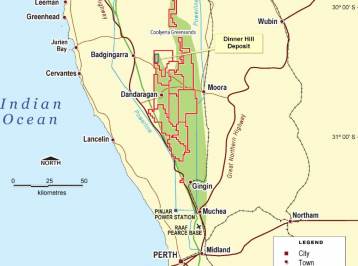Potash West, an exploration company focused on developing potassium-rich glauconite deposits in West Australia’s Perth Basin, has revisited its phosphate resource at its Dinner Hill Project. The company newly estimates resource of 250 million tons at 2.9 percent P2O5, a 108 percent tonnage and 4 percent grade increase. Dinner Hill is part of the Dandaragan Trough Project hosting numerous phosphate occurrences and it is one of the world’s largest glauconite deposits. The resource update reflects the findings based on drilling in 90 holes in 2014 and 2015, which have found more phosphate grades in the North.
The new results and upgrade will now serve as the basis for pit design and mine scheduling studies. Principal potash mineralization now occurs in the Molecap Greensand, which is thought to contain 175 million tons at 4 percent K2O, a 43 percent increase in tons and a 12 percent grade reduction. According to Patrick McManus, Managing Director of Potash West, “these are very pleasing results, which have further highlighted the world-class size and prospectivity of our Dandaragan Trough Project”.
He added that the drilling has attained all its targets – to identify the extent of mineralization, obtain samples to complete metallurgical and process development test work, and drill a sample area of the deposit to confirm the drill density that will be required to report. The extent of mineralization is necessary to define the deposit sufficient to delineate an area that will be affected by the mining activity.
Mr McManus moreover said that “importantly, the mineral inventory for phosphate production has increased substantially, and there is still a significant area of the prospective Dinner Hill tenement to be explored”. He added that “phosphate and potash mineralization are open to the east and to the south, which offers considerable upside at Dinner Hill for increased project life, or capacity increases.”




